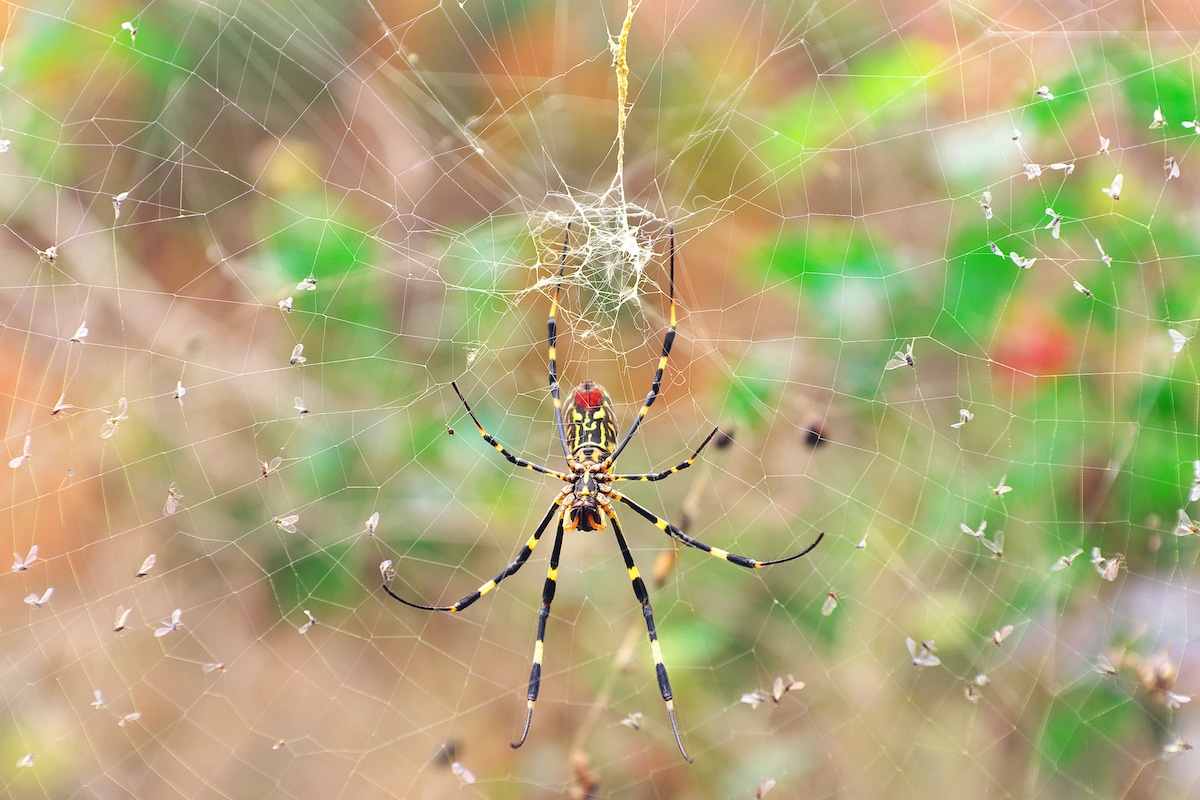

If the murder hornets in 2020 weren’t enough, a new invasive critter, alarming in appearance only, is set to take over the East Coast. Known as the joro spider, or Trichonephila clavata, this arachnid is expected to spread beyond Georgia and up the East Coast.
The sight of one is enough to make many squeamish: this brightly colored spider dons hues of yellow, dark blue-black, and red and can grow to be 3 to 4 inches. But they are relatively harmless, researchers at the University of Georgia say.
Although the spiders may become a food source for some native birds, they are invasive due to their ability to survive cold climates thanks to a high heart rate and metabolism. Despite the invasive nature of this species, the researchers note that they have no known disruption to local ecosystems or food webs.
With that in mind, people along the East Coast will need to learn to live with the spiders.
“If they’re literally in your way, I can see taking a web down and moving them to the side, but they’re just going to be back next year,” Andy Davis, corresponding author of the study, said in a press release.
“The way I see it, there’s no point in excess cruelty where it’s not needed,” added Benjamin Frick, co-author of the study. “You have people with saltwater guns shooting them out of the trees and things like that, and that’s really just unnecessary.”
Joro spiders arrived in the U.S. in 2013 and have largely remained in the southeastern part of the country. They are native to Japan and likely made it to the U.S. via shipping containers and are relatives to the golden silk spider.
The new study explores the differences between the joro spiders and golden silk spiders, which arrived in the southeastern U.S. about 160 years ago. The golden silk spider never moved past the Southeast, though, because it lacks the ability to withstand cold and brief freezing the way joro spiders do.
Another characteristic that allows joro spiders to spread so quickly is ballooning, where the spiders use their silk to travel through the wind to new locations. But the researchers anticipate the joro spiders will also spread because of human movements. They may find their way to new regions via cars or luggage, just as they arrived to the U.S. via shipping containers.
“The potential for these spiders to be spread through people’s movements is very high,” Frick said. “There’s really no reason to go around actively squishing them. Humans are at the root of their invasion. Don’t blame the Joro spider.”
The scientists emphasize that humans shouldn’t panic over the eventual spread of these spiders, which aren’t dangerous to humans or pets. They may bite if they feel threatened, but their fangs are rarely strong or large enough to break human skin.

 233k
233k  41k
41k  Subscribe
Subscribe 